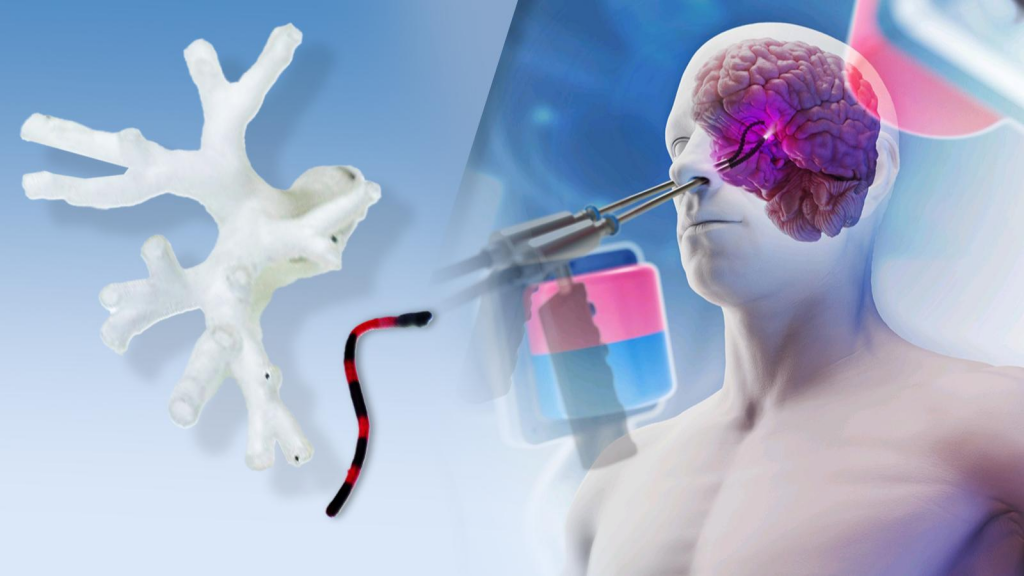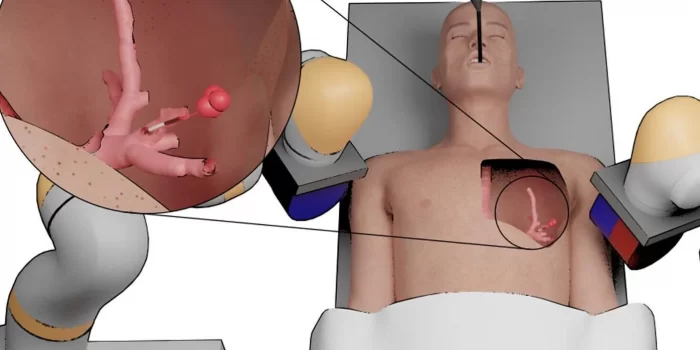A interdisciplinary team from the University of Leeds has created a ground-breaking medical robot that has the potential to revolutionize the diagnosis of lung cancer. This tiny robot, which has a diameter of just two millimeters, may be able to accurately identify and cure lung cancer’s early symptoms.
The key to this innovative medical marvel lies in its remote magnetic actuation. The robot’s ultra-soft tentacle-like structure is controlled by magnets while inside the human body, allowing it to navigate deep into the lungs without causing significant tissue damage. Unlike conventional equipment, this soft robot can penetrate 37 percent deeper into the lung’s intricate passages, making it significantly less invasive and reducing the risk of harming surrounding healthy tissues.
One of the most remarkable features of this robotic wonder is its ability to perform precise biopsies. By targeting only malignant cells, physicians can gather accurate diagnostic information, leading to earlier detection and more effective treatment.

Professor Pietro Valdastri, Director of the STORM Lab and the research supervisor, expressed his excitement about the potential of this new approach, which could revolutionize navigation inside the body. The team’s goal is to provide curative aid to patients with minimal pain, making lung cancer treatment more manageable and effective.
The research team envisions a bold future for this technology by planning to conduct clinical human trials. Their ambitious goal involves controlling two independent magnetic robots simultaneously within the confines of the human body. One robot will be equipped with a camera to provide real-time visual feedback, while the other will direct a laser to precisely target and remove tumors.
Controlling two magnetic robots in such a small space was no easy feat, as they would naturally be attracted to each other. However, the team ingeniously designed the tentacles to bend only in specific directions and strategically relocated the north and south poles in each magnetic robot tentacle, overcoming this challenge.

The significance of this advancement cannot be overstated. Lung cancer often goes undetected until an advanced stage, contributing to the highest cancer death rates worldwide. With this sophisticated medical robot, early diagnosis could become a reality, potentially saving countless lives.
The researchers have already demonstrated the potential of their technology by successfully performing endonasal brain surgery in a skull replica, effectively removing a benign tumor from the pituitary gland. This success showcases the adaptability of the robotic system to perform delicate surgeries in tiny anatomical areas.
Published in the journal Nature Engineering Communications, the research findings herald a new era in medical robotics. As the team continues to push the boundaries of innovation, the world eagerly awaits the next steps in realizing the full potential of this surgical robot and its transformative impact on lung cancer diagnostics and treatment. With such promising advancements on the horizon, the future of medical science appears brighter than ever before.


